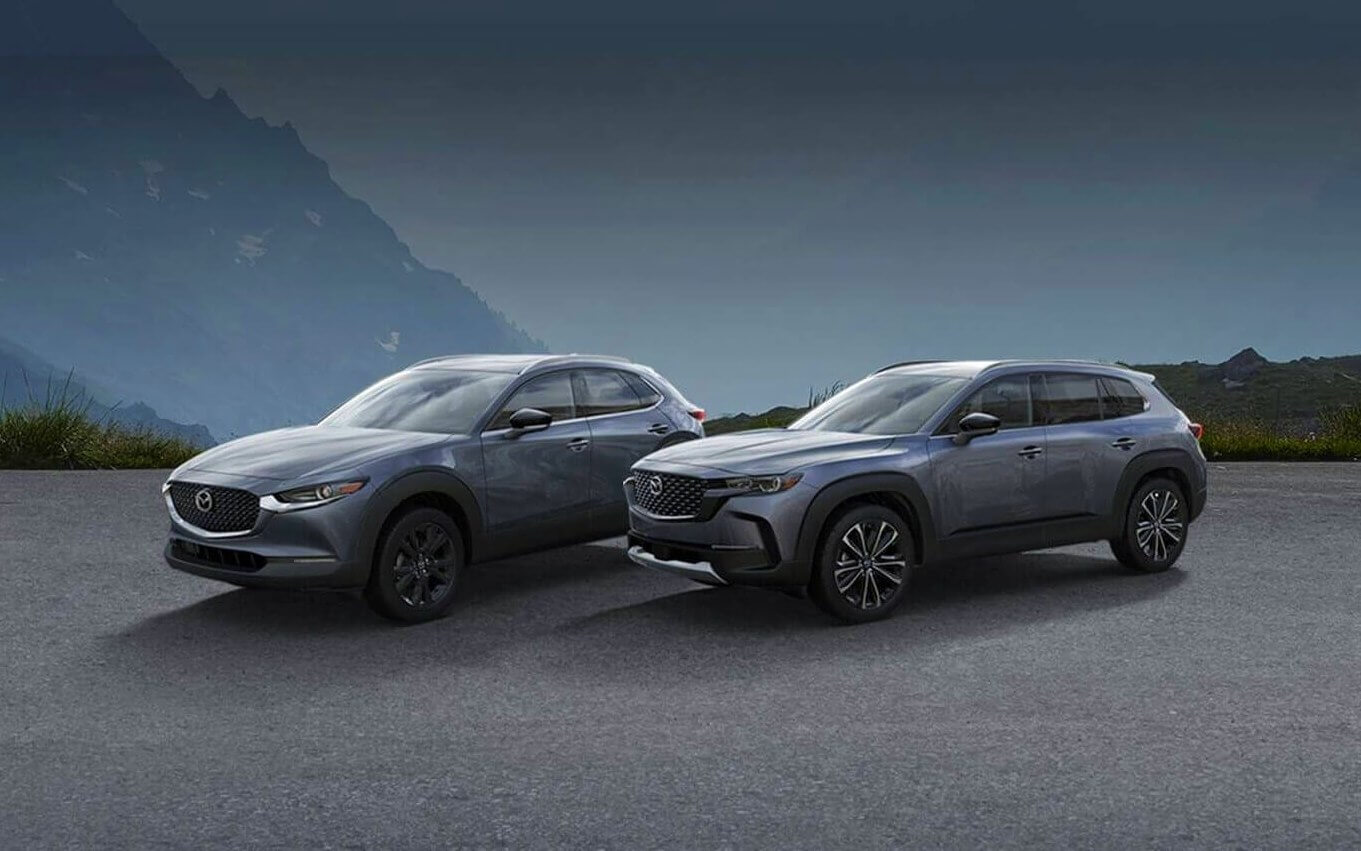Mazda CX-30 & CX-50: Small Crossover SUV Comparison

If you’re shopping for a small and agile new two-row model from the Mazda crossover SUV lineup, you’ll likely consider the Mazda CX-30 and CX-50. Many SUV shoppers have a tough time deciding between the Mazda CX-50 and CX-30 due to their similar features and performance, but their differing pricing, fuel economy, and dimensions can help determine which is the better option for your drive.
See our quick take and more detailed comparison of the Mazda CX-30 vs. CX-50 crossover SUV models below:
Quick Take: Highs & Lows of the CX-30 & CX-50
Mazda CX-30
Highs:
- Even more fuel-efficient and light on its feet than the CX-50, thanks to its smaller dimensions and lower curb weight.
- Most affordable entry point into the Mazda crossover SUV lineup.
- Ample ground clearance matched with a neutral ride height for easy ingress/egress.
- Great alternative for compact car drivers not ready to upgrade to a larger two-row SUV.
Lows:
- Cargo space and versatility are on the lower end for small crossovers and similar to the Mazda3 it’s based upon.
- Liberal use of thick black plastic cladding around the wheel wells and lower body isn’t for everyone.
Mazda CX-50
Highs:
- 3,500-pound maximum towing capacity (compared to the CX-30’s 1,500-pound tow rating)
- Available Off-Road mode and rugged, all-terrain Meridian Edition
- More second-row legroom and standard and maximum cargo space
- Even more ground clearance than the CX-30 while maintaining a low, streamlined look and easy ingress/egress.
Lows:
- Its wider stance and exterior don’t translate to more shoulder room and hip room than the smaller CX-30.
- Pricier than the Mazda CX-30 and its compact SUV stablemate, the CX-5.
Comparing Mazda’s Agile & Adventurous Small SUVs
Dimensions
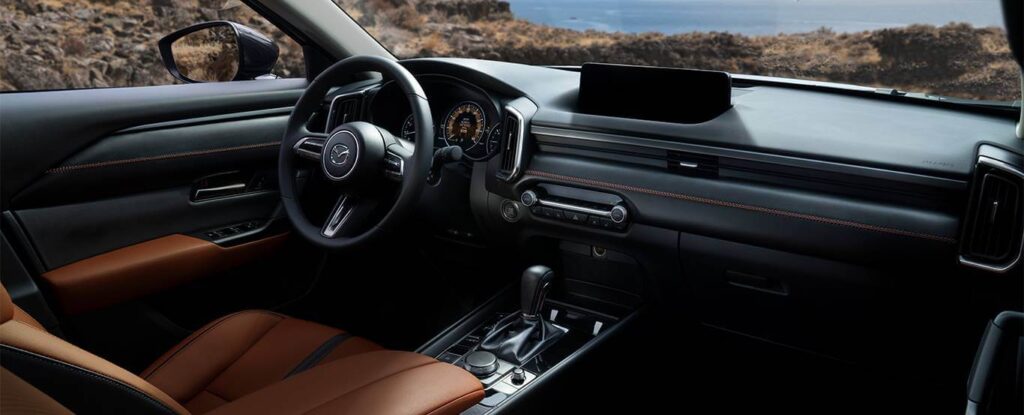
Exterior and interior dimensions will be a determining factor for many drivers shopping the Mazda CX-30 against the CX-50.
At one foot longer, five inches wider, and riding on a wheelbase that’s six inches longer than the CX-30, the Mazda CX-50 is certainly a more substantially sized vehicle than its subcompact stablemate.
The same goes for the interior, where the CX-50’s 100.3 cubic feet of passenger volume tops the CX-30’s 94.1 cubic feet. However, both models provide ample cabin space with five-passenger seating in their two rows.
The CX-30’s shorter wheelbase and overall length hold it back in second-row legroom and cargo space. Still, considering its smaller size, it’s not far behind the CX-50 in any of these measurements, including cargo volume behind the second row and maximum cargo capacity with the rear seats folded.
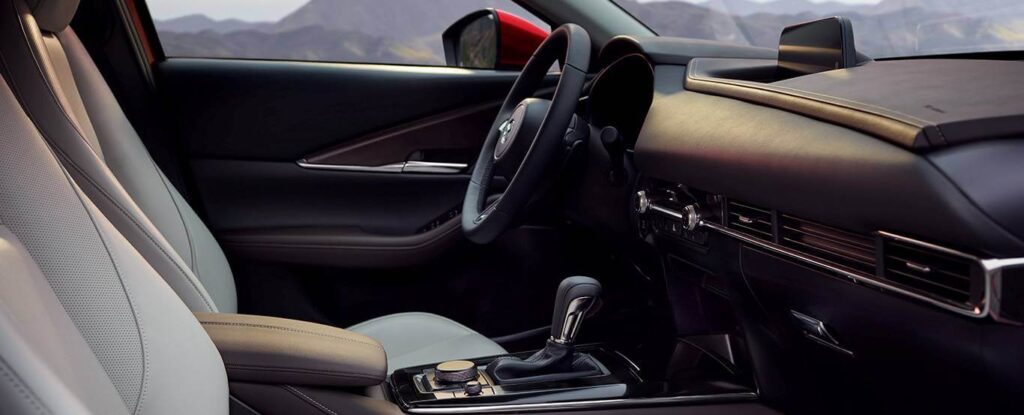
One area where the smaller CX-30 subcompact crossover SUV surprises in this comparison with the CX-50 is cabin width and headroom.
Even though the CX-30 is about five inches narrower and two inches lower than the CX-50, it offers very similar front and rear headroom, shoulder room, and hip room to its larger SUV sibling.
| Mazda CX-30 | Mazda CX-50 | |
| Length | 173 in | 185.8 in |
| Width | 70.7 in | 75.6 in |
| Height | 61.7 in | 63.5 in |
| Wheelbase | 104.4 in | 110.8 in |
| Passenger Volume | 94.1 cu ft | 100.3 cu ft |
| Seating Capacity | 5 | 5 |
| Headroom | 1st Row: 38.1 in 2nd Row: 38.3 in | 1st Row: 39.1 in 2nd Row: 38.6 in |
| Legroom | 1st Row: 41.7 in 2nd Row: 36.3 in | 1st Row: 41.7 in 2nd Row: 39.8 in |
| Shoulder Room | 1st Row: 55.6 in 2nd Row: 53.6 in | 1st Row: 55.9 in 2nd Row: 53.6 in |
| Hip Room | 1st Row: 54.6 in 2nd Row: 53.2 in | 1st Row: 53.6 in 2nd Row: 52.1 in |
| Cargo Space | 20.2 cu ft | 31.4 cu ft |
| Max Cargo Capacity | 45.2 cu ft | 56.3 cu ft |
Power & Efficiency
Both of these small SUVs are motivated by Mazda’s tried-and-true Skyactiv-G 2.5-liter and 2.5-liter Turbo engines, resulting in similar power output and performance.
The naturally aspirated Skyactiv-G 2.5-liter four-cylinder engine in the smaller and lighter CX-30 makes a bit more horsepower than in the CX-50, at 191 horsepower compared to 187.
It’s the opposite result when comparing the turbocharged variants of these SUVs, where the 256-horsepower CX-50 Turbo trims top the power output of the 250-horsepower CX-30 Turbo models (when both are running on premium, high-octane fuel).
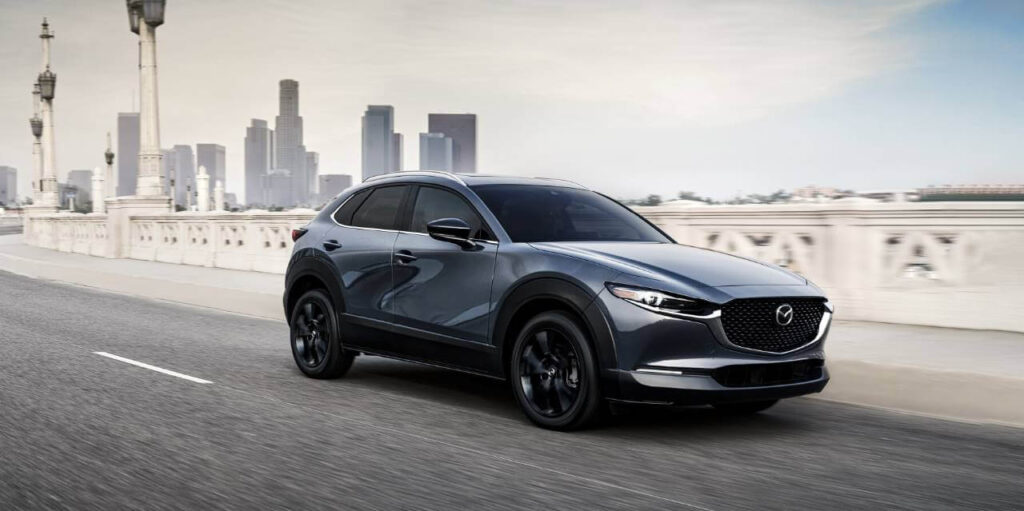
If fuel efficiency is at or near the top of your list when shopping for one of these new Mazda SUVs, consider opting for the CX-30 with its base 2.5-liter inline-four engine. It earns up to an EPA-estimated 26/33 MPG (City/Highway).
That tops the best the Mazda CX-50 model offers, with its EPA-estimated 24/30 MPG (City/Highway) rating. However, a Mazda CX-50 Hybrid model will make for a more MPG-competitive compact SUV.
However, if you have your heart set on the more thrilling power of a turbocharged model, fuel economy differences become far less pronounced.
In the case of the turbocharged models, the larger and more versatile CX-50 only narrowly misses matching the CX-30 Turbo MPG figures, by one MPG in both city and highway driving.
So, there’s no real gas mileage penalty when opting for the substantially more spacious CX-50 Turbo over the CX-30 Turbo.
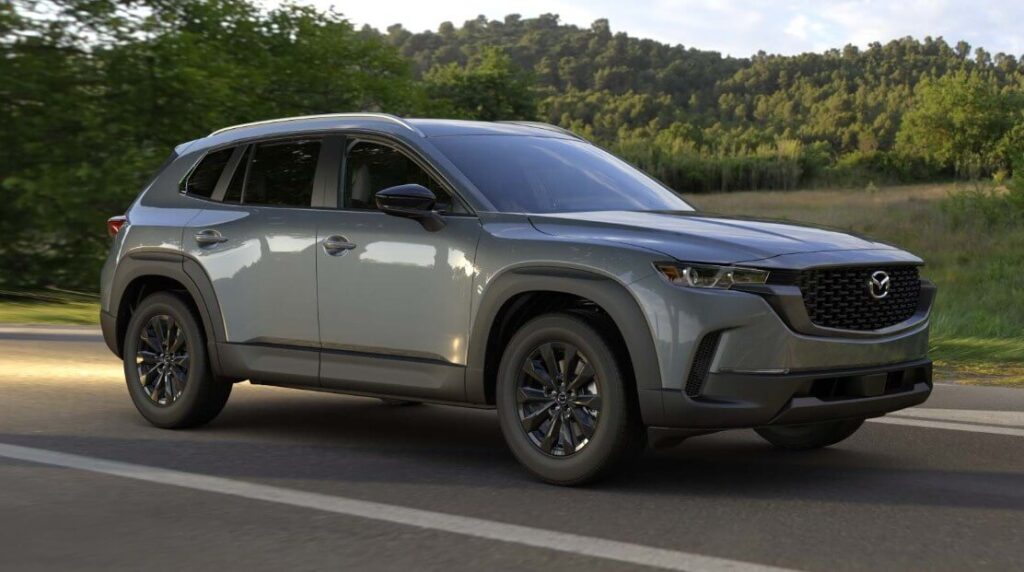
The CX-50 is the better option if you plan to tow even a small trailer or weekend toys, as it boasts a maximum towing capacity of 3,500 pounds, topping the CX-30’s 1,500-pound tow rating by a significant margin.
Like the larger CX-50, all the new CX-30 crossover SUVs get standard i-Activ AWD and a six-speed automatic transmission with sport mode.
| Mazda CX-30 | Mazda CX-50 | |
| Horsepower | 191 | 187 |
| Turbo Model Horsepower | Up to 250 | Up to 256 |
| Drive Type | AWD | AWD |
| EPA-Est. MPG City | 26 | 24 |
| EPA-Est. MPG Highway | 33 | 30 |
| Turbo Model MPG City | 22 | 23 |
| Turbo Model MPG Highway | 30 | 29 |
| Quickest 0-60 mph (Turbo Model) | 5.8 sec | 6.4 sec |
So, now that we’ve taken a closer look at how the Mazda CX-50 and CX-30 compare in exterior dimensions, interior capacities, power output, and gas mileage, which seems like the better fit for your drive?
If you’re leaning toward the CX-50 model due to its larger dimensions, you may want to see how it compares to the CX-5, Mazda’s more popular and global compact SUV model.
Or, see how the CX-50 and the new CX-70 large two-row SUV stack up against each other in size, space, specs, and performance.
Keep in mind that whether you’re shopping for a new or used Mazda SUV, the smaller CX-30 typically offers more affordable pricing than the CX-50, even though their interiors can be similarly equipped.
We’ve also compiled a detailed comparison of the CX-30 vs. CX-5, in case you’re thinking of expanding your Mazda SUV search.
Join Our Newsletter
Never miss a Mazda when you sign up for our email list:

